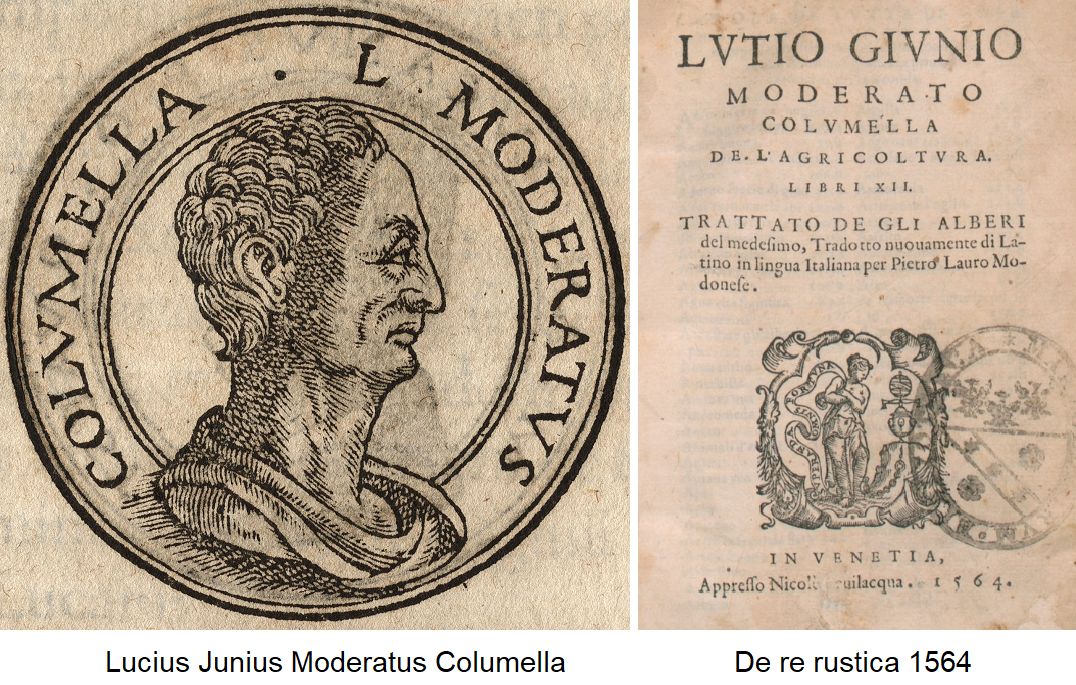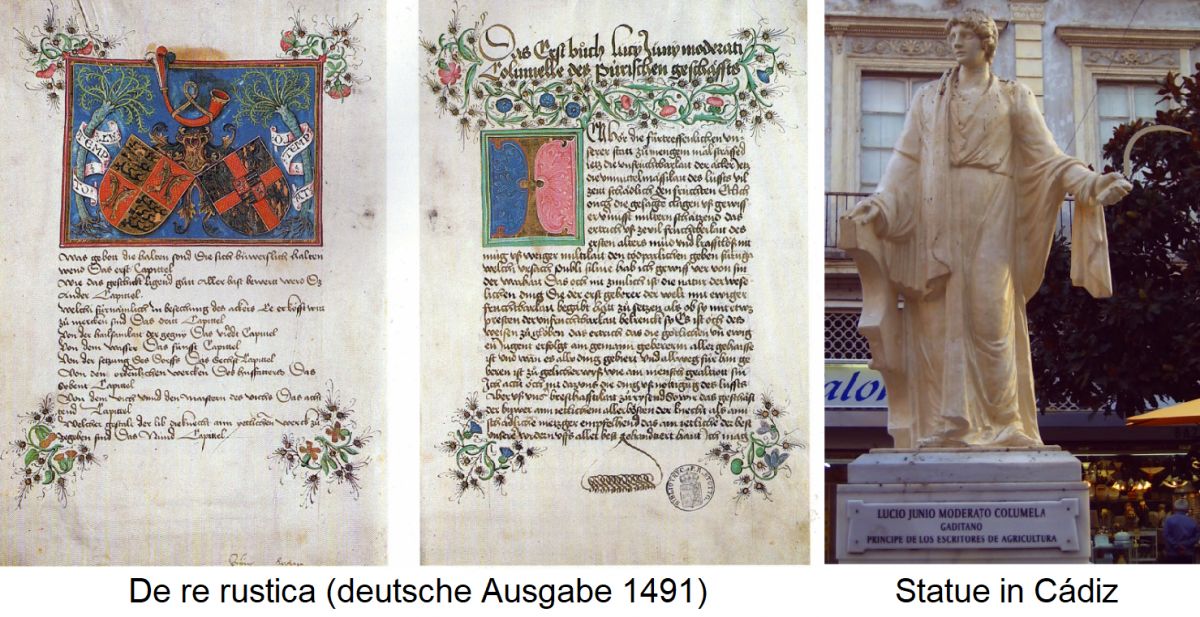The Roman writer Lucius Junius Moderatus Columella (+70) was born in Gades (today Cádiz) in Andalusia(Spain) around the turn of the century. However, relatively little is known about the exact dates and also about his life. He served as an officer in the Roman army in Syria. Columella is considered one of the most important Roman authors on viticulture. He was a contemporary of Pliny the Elder (23-79 AD), who also wrote about viticulture, but it is not known whether they knew or influenced each other. He wrote his best-known work "De re rustica" (on rural affairs) at an already advanced age of 60 to 65 AD and titled it exactly like the work of the Carthaginian Mago (around 500 BC), whom he also quotes extensively. Furthermore, he also quotes Virgil (70-19 BC), whom he admired, with his work "Georgica". Columella's work was published until the 16th century. The author Petrus de Crescentiis (1230/1233-1320/1321) devoted himself to the same subject in the late Middle Ages and took Columella's book structure as his model.

The completely preserved work "De re rustica" consists of 12 books. The third, fourth and twelfth books are devoted to viticulture and winemaking. He visibly draws on his own observations and experiences. He describes in great detail methods that testify to professional viticulture at that time. These are, for example, the planting density of vines (two steps apart), grafting, vine training (tying to a man-high pole made of chestnut wood with willow rods), vegetative propagation by lowering, pruning, choice of grape variety depending on the soil type, yield (20 amphorae per jugerum = about 20 to 30 hl/ha), grape harvest, vinification and vinegar production.
Columella lists a total of 58 grape varieties known to him. He describes the Biturica, also mentioned by Pliny, as particularly fertile and resistant (Columella, however, calls it Balisca). He also mentions a Vitis albuelis, which is often assumed to be the ancestor of the Elbling, as well as a Vitis apiana, from which the Fiano variety and possibly also Muscat Blanc are said to be descended. The cost and labour involved is also a topic covered in detail. He describes, for example, that on a January day one man could cut and sharpen 100 poles. In order to get by with as little labour as possible, he suggests planting grape varieties that ripen differently. He defines very precisely what qualities the slaves must have and expressly advises against those who have carried out finer tasks, such as are suitable for a city. For these are accustomed to idleness, circuses, games of dice, cookshops and brothels.

The ideal is a slave who has been accustomed to hard farm work since childhood. According to their skill, he differentiates slaves into ploughmen (aratores), winegrowers (vinitores) and domestic servants (medianisti). He criticises the practice of flavouring, which was common in his time: "We think that the best wine is that which can be aged without preservatives. Nothing must be added to it that could disguise its natural taste. For the most excellent wine is that which gives pleasure by its natural qualities." An older work called "De arboribus" (On Trees), in which among other things the vine is described, has unfortunately only partially survived. Parts of his works are also included in the famous 10th century agricultural compilation Geoponika. See also under Ancient Wines.
Columella: By Jean de Tournes, Public Domain, Link
De re rustica 1564: By Columella, Public Domain, Link
De re rustica 1491: By Heinrich Österreicher, Public Domain, Link
Statue: Public Domain, Link
Voices of our members

There is a vast number of sources on the web where one can acquire knowledge about wine. But none has the scope, timeliness and accuracy of the information in the encyclopaedia at wein.plus. I use it regularly and rely on it.
Sigi Hiss
freier Autor und Weinberater (Fine, Vinum u.a.), Bad Krozingen